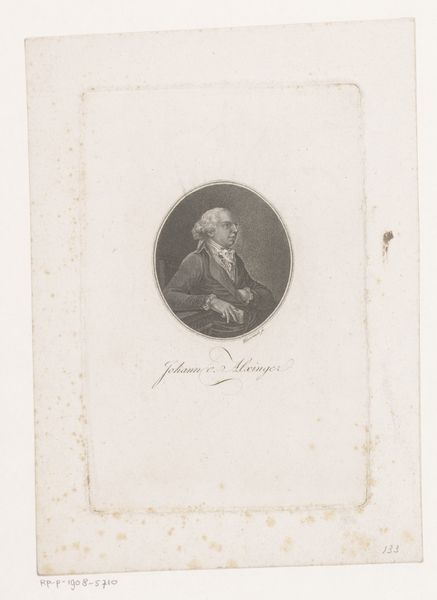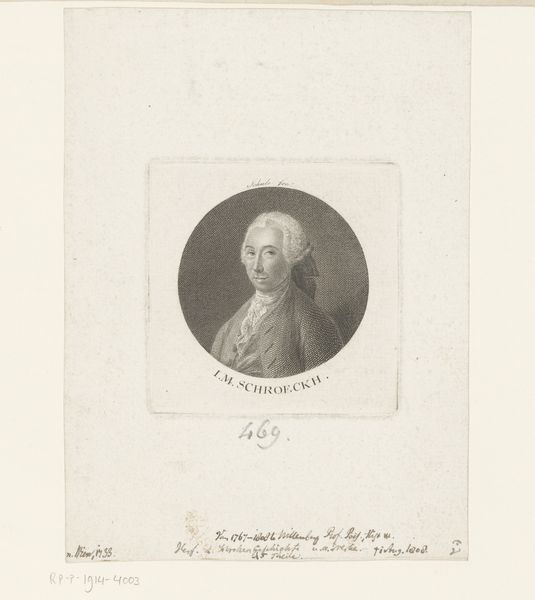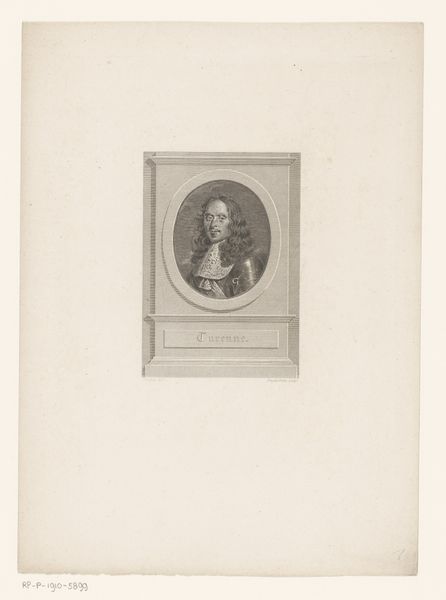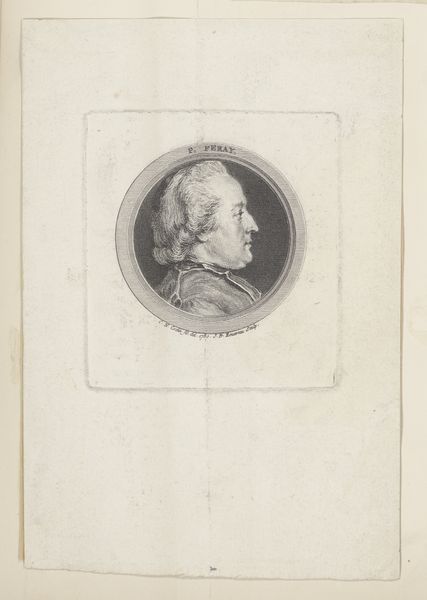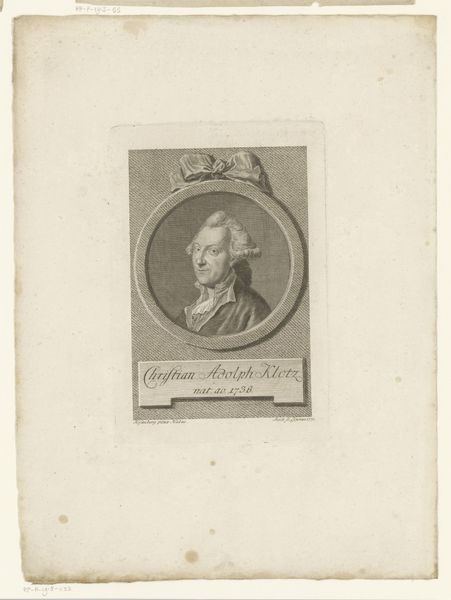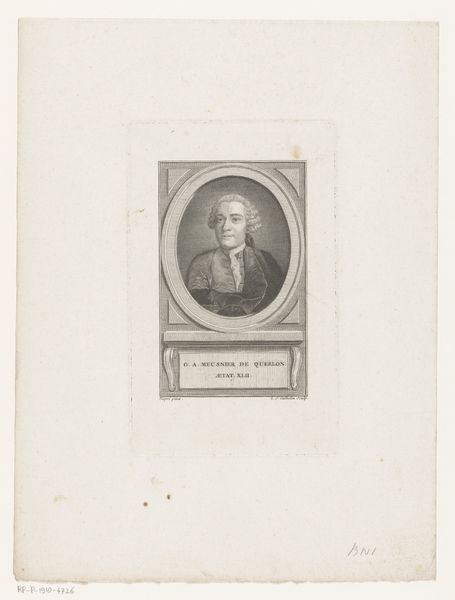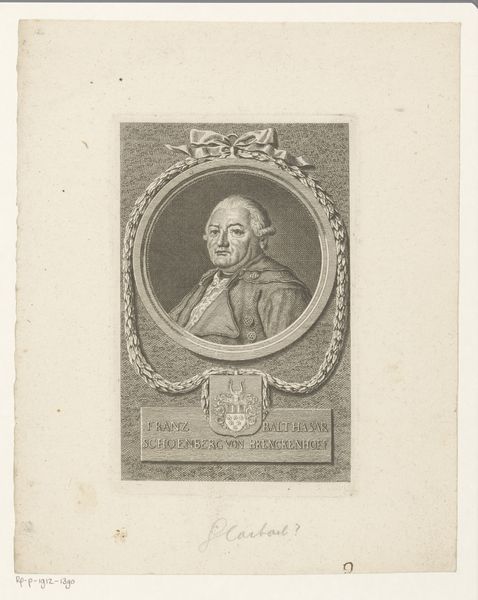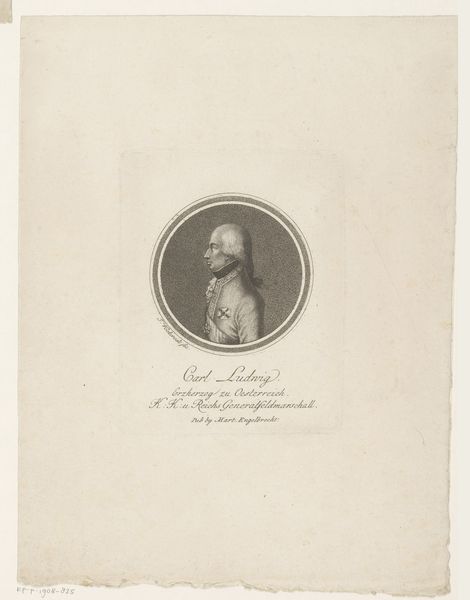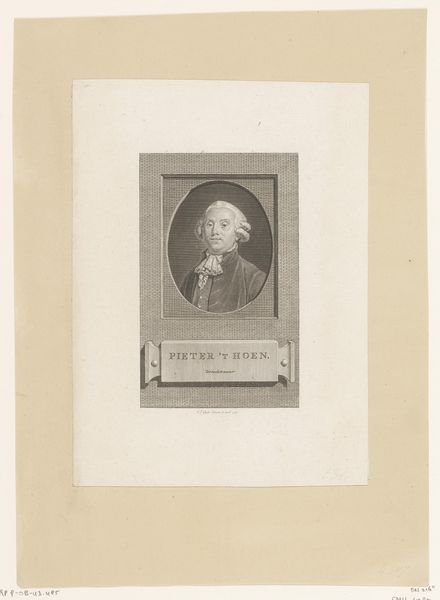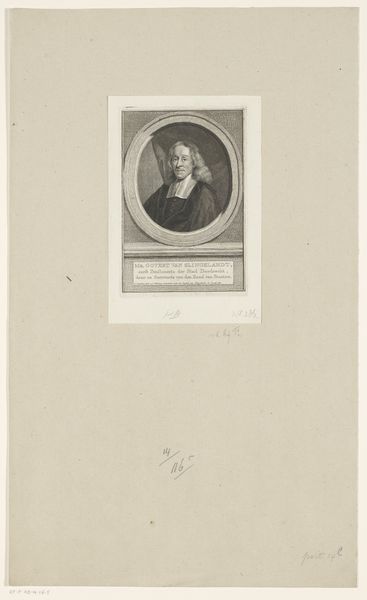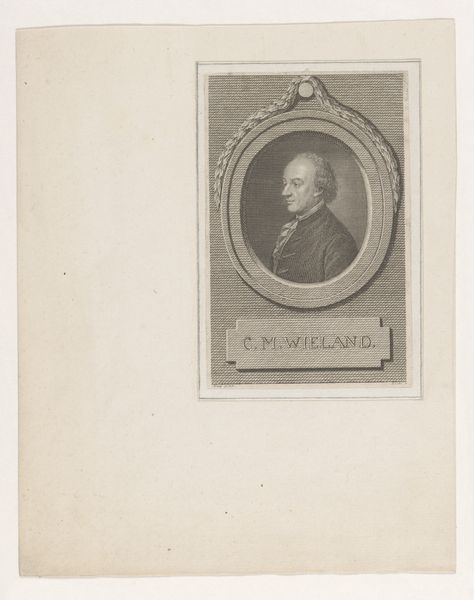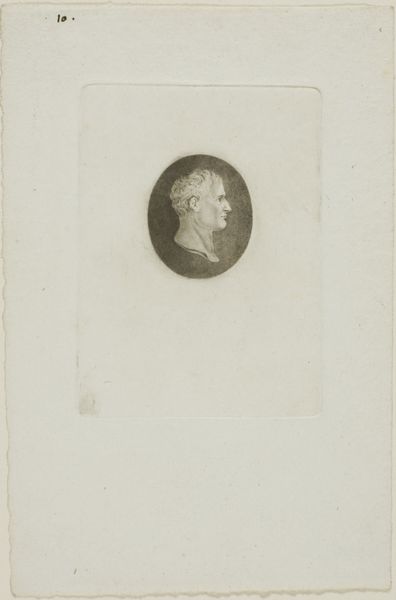
drawing, paper, engraving
#
portrait
#
drawing
#
neoclacissism
#
old engraving style
#
paper
#
15_18th-century
#
engraving
Dimensions: height 123 mm, width 75 mm
Copyright: Rijks Museum: Open Domain
Curator: This delicate engraving from sometime between 1762 and 1799, entitled "Portret van L. D. P. Rumpf," is attributed to Georg Joseph Coentgen. It's done on paper. Editor: My immediate sense is one of cool detachment. The monochromatic palette and precise lines create a certain formality. Curator: Absolutely. Looking at the printmaking itself, you see that the process of engraving involves careful labor, removing material to create these refined lines. Consider the paper substrate: its relative fragility speaks to the economic accessibility of print media at the time versus painting for portraits. This put portraiture in more hands, democratizing its reach. Editor: But even within that democratized reach, portraiture served to immortalize and convey status. This man, Rumpf, is framed, quite literally, by an oval. Ovals have long been used to represent prestige. The composition lends him a sense of classical authority, wouldn't you say? Look at his clothing and bearing too; how do they function symbolically? Curator: Precisely! And we shouldn't disregard clothing in a material analysis. The coat, the intricate lace—they tell a story of class and labor; each of these items signifies global trade and its inherent structures. What were the conditions of garment construction? Editor: Yet, these are items that represent *him*–his choices and place in the world. I can’t help but be drawn to the slight downturn of his mouth, the piercing quality of his eyes, the carefully arranged clothing, his powdered wig. It isn’t just a collection of expensive materials; he’s trying to convey specific qualities: authority and intellectual power. The eyes really are intense. What is it that he wants the viewer to believe? Curator: It's fascinating to consider those tensions—the sitter’s intentions versus the system he's operating within, using fashion and the economic system. It makes you question what materials signify outside a static image and enter into social dialogues that transcend portraiture. Editor: It really makes one contemplate the layers of meaning we ascribe to faces, fashions, objects, even today. Curator: Indeed. It is compelling to recognize that there's still more that might be uncovered by examining materials and symbols to provide modern cultural understanding.
Comments
No comments
Be the first to comment and join the conversation on the ultimate creative platform.
